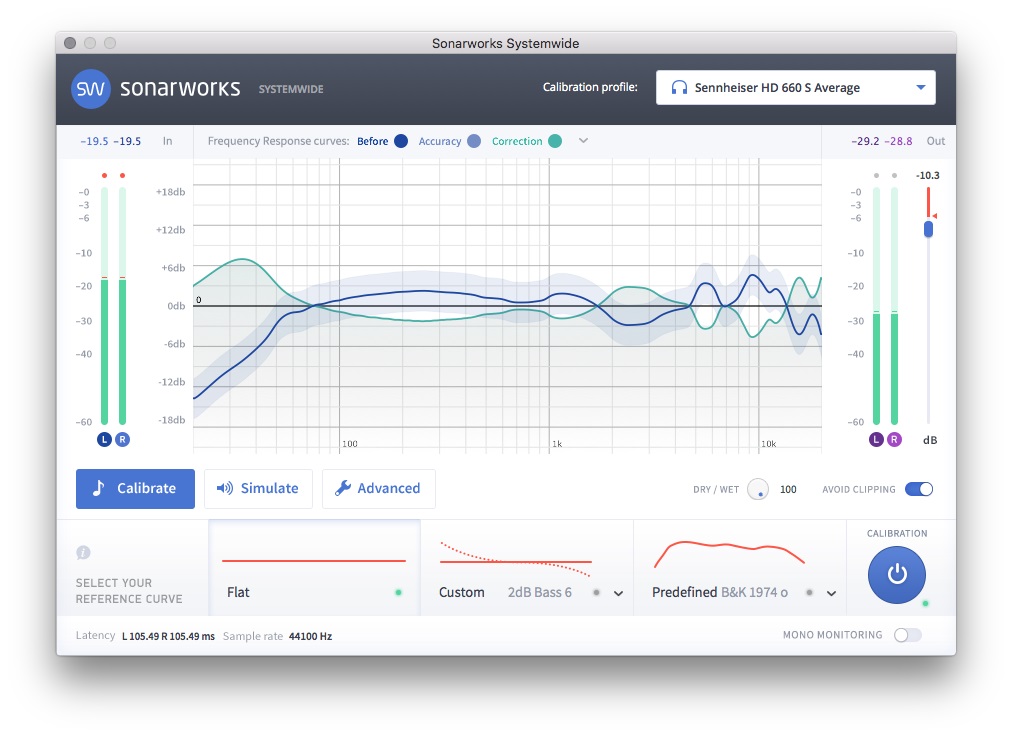

- #Sonarworks reference 3 studio calibration how to
- #Sonarworks reference 3 studio calibration software
- #Sonarworks reference 3 studio calibration windows 8
- #Sonarworks reference 3 studio calibration professional
Get it here or use a third-party omnidirectional measurement mic. Hardware Setup: audio settings and input/output setupĭuring this stage, you'll have to set up your input/output channels, gain and volume levels and make sure that your stereo field is correct. Remember, you will need a measurement mic for this - vocal and instrument mics will NOT work.


#Sonarworks reference 3 studio calibration software
It features an advanced system for detecting any incorrect settings or other errors that you might encounter, so it is important to trust the software and let it do the heavy lifting for you! It will guide you through the process providing the necessary audio setup and visual instructions, as well as troubleshooting tips.
#Sonarworks reference 3 studio calibration professional
The SoundID Reference speaker measurement module is a highly accurate and user-friendly tool for speaker calibration it is designed to perform in both domestic and professional studio environments.
#Sonarworks reference 3 studio calibration windows 8
Buy here / Download here/Free trial here (requires Windows 8 or higher / MacOS 10.12 or higher)Ĭalibrate speakers with the measurement module SoundID Reference For Speakers and Headphones software installed.Obtain one here or use a third-party omnidirectional measurement mic (vocal and instrument mics will NOT work USB mics are not supported) SoundID Reference Measurement Microphone.XLR to XLR audio cable to connect the microphone to your audio interface (not included in our product bundles).Audio interface (sound card) with +48v Phantom Power and 44.1 kHz sample rate capability.Stereo speaker setup - you can also calibrate with a subwoofer in a 2.1 stereo configuration.
#Sonarworks reference 3 studio calibration how to
In this article, we'll have a look at the speaker measurement process using the SoundID Reference speaker measurement module (generating the speaker calibration profiles) and then see how to apply those profiles in the SoundID Reference app and DAW plugin to calibrate your speaker system. So before you can enjoy the calibrated sound, you will first need to measure the frequency response of your room and speakers. There are many things affecting the sound of your speakers - room dimensions, acoustic treatment, speaker placement, etc. The concept of calibrating your speakers can be a little confusing, especially if you are new to SoundID Reference software. What you need to know before clicking on 'New speaker measurement' Clicking on 'Select your calibration profile' and then on 'New speaker measurement' will launch a separate module for speaker measurements in SoundID Reference: After installing the SoundID Reference for Speakers & Headphones software, you will be able to proceed with headphone or speaker calibration. Calibrating speakers with SoundID Reference is easy, but there are some key aspects to speaker calibration that you might want to be aware of.


 0 kommentar(er)
0 kommentar(er)
